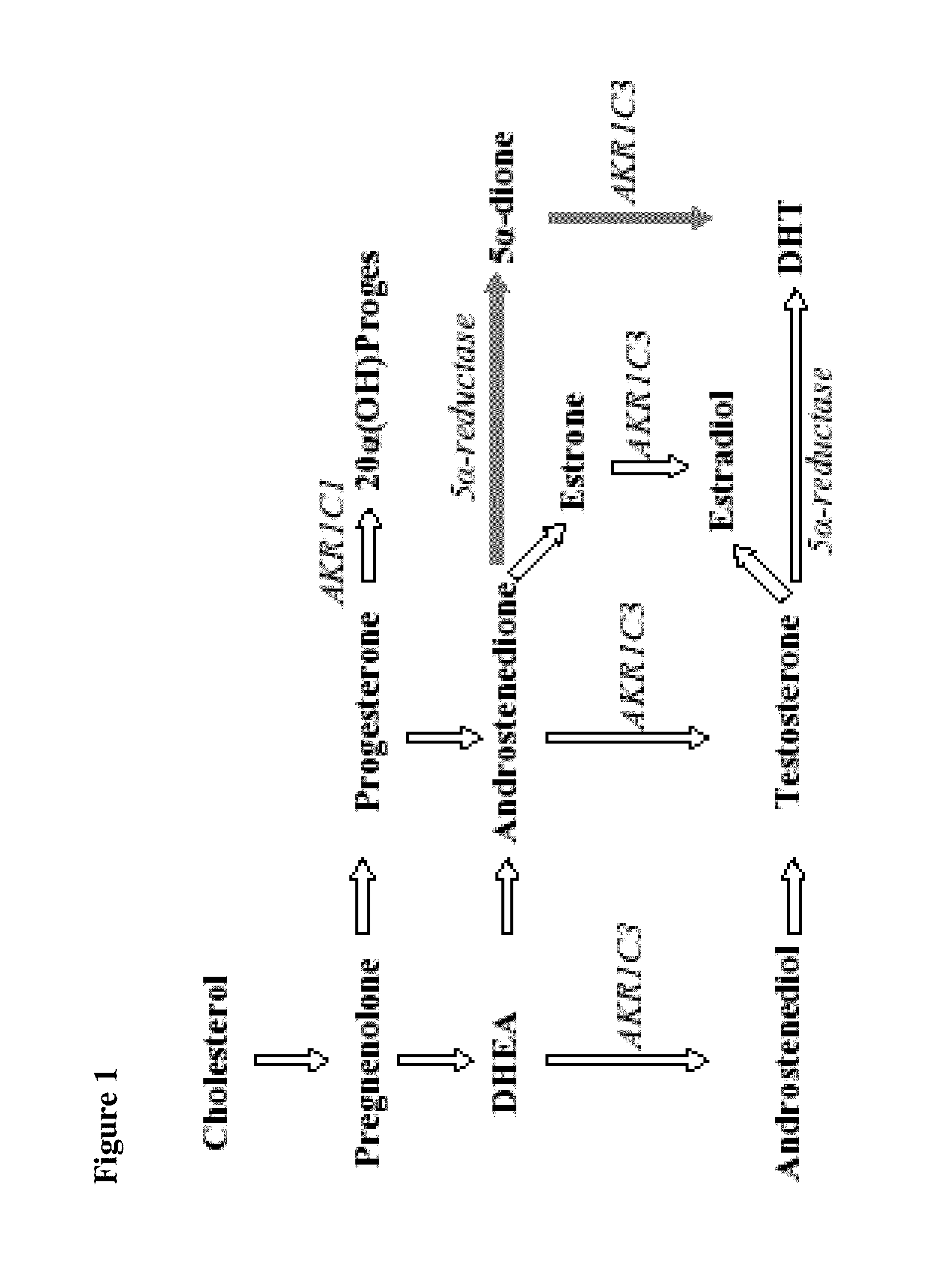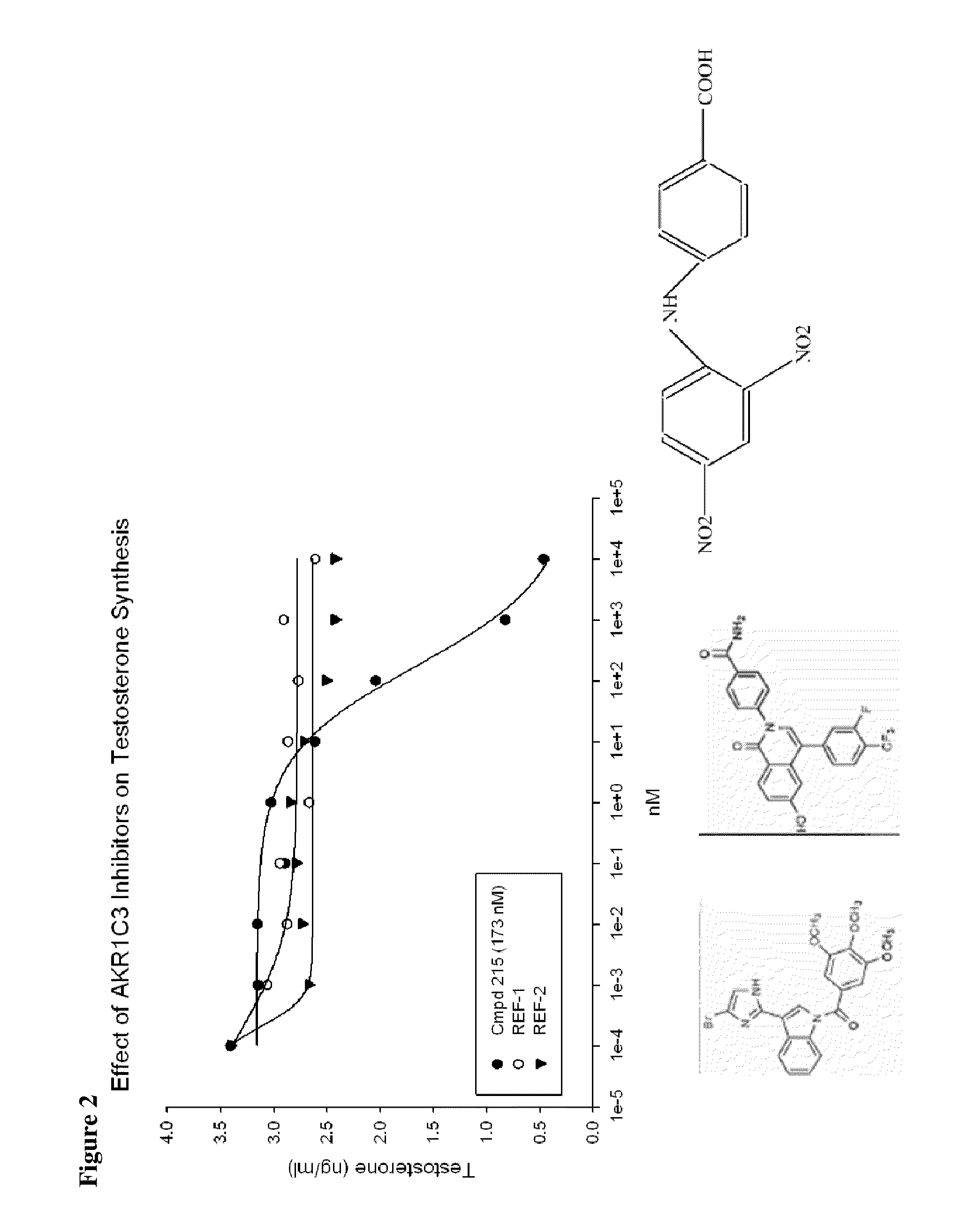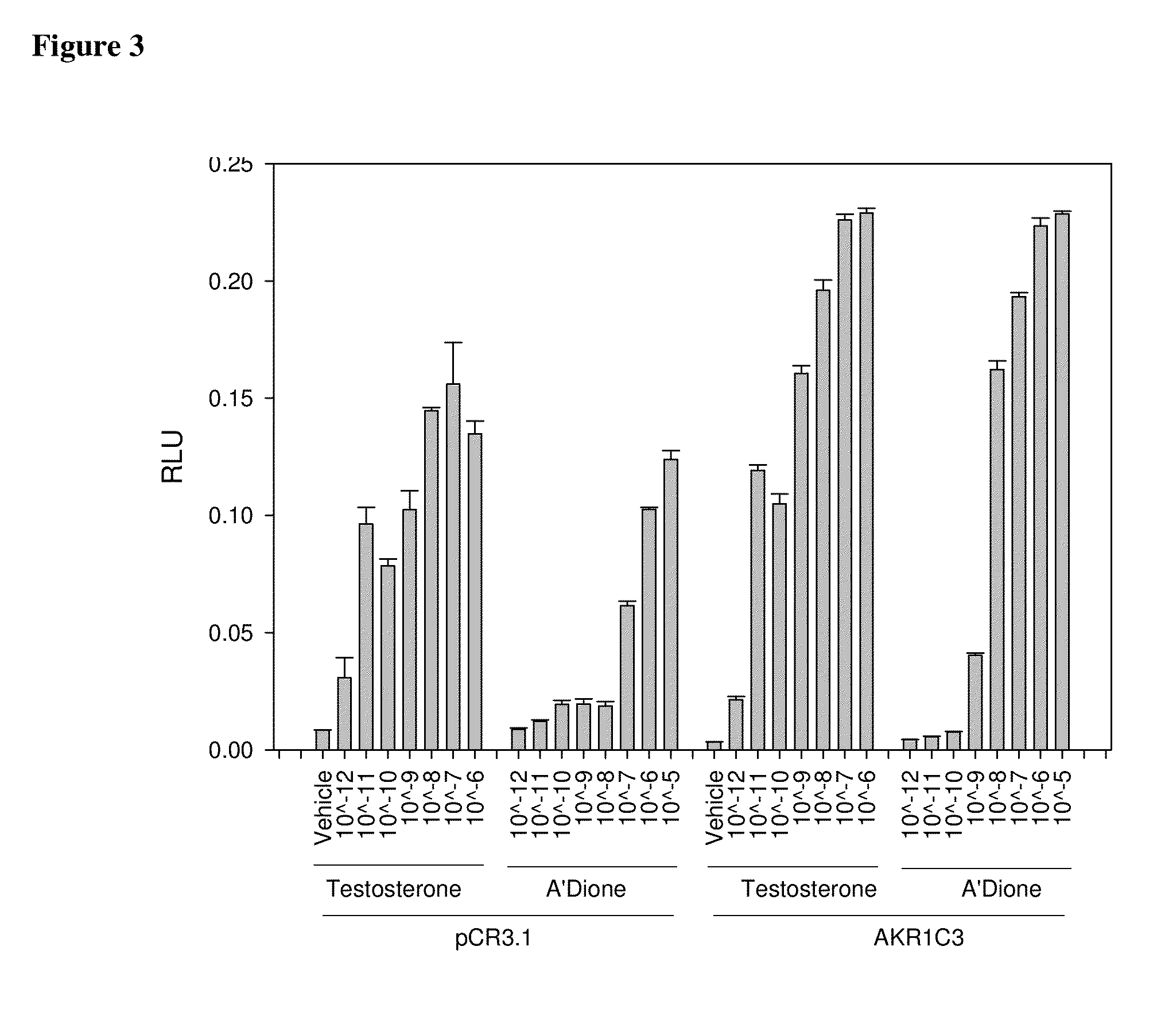Aldo-keto reductase subfamily 1c3 (AKR1c3) inhibitors
a reductase and aldo-keto technology, applied in the field of aldo-keto reductase subfamily 1c3 inhibitors, can solve the problems of increased risk of cardiovascular disease, and increased survival of subjects, so as to increase the survival of subjects, and increase the effect of survival
- Summary
- Abstract
- Description
- Claims
- Application Information
AI Technical Summary
Benefits of technology
Problems solved by technology
Method used
Image
Examples
example 1
Synthesis of isoquinolin-1(2H)-one AKR1C3 inhibitors
example 1a
Synthesis of 6-hydroxy-2,4-bis(4-hydroxyphenyl)isoquinolin-1(2H)-one (6)
[0493]
Synthesis of 6-methoxyisoquinoline-1-ol (1)
[0494]A mixture of 17.82 g (0.10 mol) of trans-3-methoxycinnamic acid and thionyl chloride (14.28 g, 0.12 mol) was placed in a 250 mL single-necked round-bottomed flask fitted with a stirring bar and reflux condenser. 80 mL of dry methylene chloride was added to the flask. The mixture was heated to reflux for 3 hours. Then, the solvent was removed under reduced pressure. The residue oil was dried under vacuum overnight.
[0495]The pale-yellow solid acid chloride was dissolved in 20 mL of 1,4-dioxane and added dropwise with stirring to a 0° C. suspension of 19.50 g (0.30 mol) of sodium azide in 80 mL of 1,4-dioxane / water (1:1 mixture). During the addition the temperature was maintained at 0° C. After complete addition of the acid chloride, the mixture was stirred at 0° C. for an additional hour, and then diluted with 75 mL of water. The mixture was extracted with met...
example 1b
Synthesis of 2-(4-bromomethyl)phenyl-6-hydroxy-4-(4-hydroxyphenyl)isoquinolin-1(2H)-one (11)
[0502]
Synthesis of 4-(6-methoxy-1-oxoisoquinolin-2(1H)-yl)benzaldehyde (7)
[0503]6-Methoxyisoquinoline-1-ol (1) (3.00 g, 17.13 mmol), 4-bromobenzaldehyde (3.80 g, 20.55 mmol), copper(I)iodide (0.65 g, 4.43 mmol), L-proline (0.79 g, 6.85 mmol) and anhydrous potassium carbonate (4.74 g, 34.26 mmol) were placed in a dry 250 mL three-necked round-bottomed flask fitted with a stirring bar and reflux condenser. The reaction flask was vacuumed and refilled with dry argon. 50 mL of anhydrous methyl sulfoxide was added via a syringe. The reaction mixture was stirred and heated to 95° C. overnight. The reaction was quenched by adding 100 mL of water at room temperature. The mixture was stirred at room temperature for 2 hours. The yellow solid was filtered out, washed with water (2×30 mL) and acetone (20 mL) and dried under vacuum. The solution was extracted with ethyl acetate (3×50 mL). The organic laye...
PUM
| Property | Measurement | Unit |
|---|---|---|
| Level | aaaaa | aaaaa |
| Enzyme activity | aaaaa | aaaaa |
Abstract
Description
Claims
Application Information
 Login to View More
Login to View More - R&D
- Intellectual Property
- Life Sciences
- Materials
- Tech Scout
- Unparalleled Data Quality
- Higher Quality Content
- 60% Fewer Hallucinations
Browse by: Latest US Patents, China's latest patents, Technical Efficacy Thesaurus, Application Domain, Technology Topic, Popular Technical Reports.
© 2025 PatSnap. All rights reserved.Legal|Privacy policy|Modern Slavery Act Transparency Statement|Sitemap|About US| Contact US: help@patsnap.com



